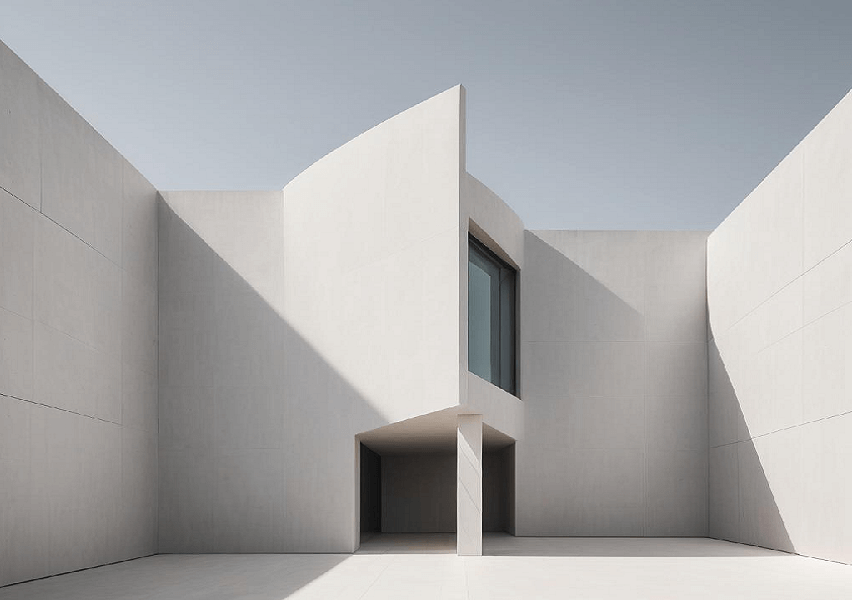
Minimalism has profoundly influenced contemporary architecture, shaping both aesthetic preferences and functional design principles. Originating in the mid-20th century as a reaction against ornate and decorative styles, minimalism emphasizes simplicity, clarity, and the use of essential elements.
This design philosophy has permeated various aspects of architecture, contributing to the creation of spaces that are both aesthetically-pleasing and highly functional.
Key Principles of Minimalist Architecture
- Simplicity and Clarity
- Design Approach: Minimalist architecture focuses on clean lines, uncluttered spaces, and straightforward forms. This simplicity promotes a sense of calm and order, making spaces feel more expansive and serene.
- Material Use: Materials are chosen for their inherent beauty and functionality, often left in their natural state. Common materials include concrete, glass, steel, and wood.
- Functionalism
- Purpose-Driven Design: Every element in minimalist architecture serves a specific purpose, eliminating unnecessary details. This focus on functionality enhances the usability and efficiency of spaces.
- Versatility: Minimalist spaces are often versatile and adaptable, allowing for multiple uses and easy reconfiguration.
- Light and Space
- Natural Light: Large windows and open floor plans maximize natural light, creating bright and airy environments. This connection to the outdoors also promotes well-being and sustainability.
- Spatial Relationships: The flow of space is carefully considered, with an emphasis on openness and continuity. This often involves the use of open-plan layouts and the minimization of interior walls.
Impact on Contemporary Architecture
- Aesthetic Evolution
- Modern Aesthetics: Minimalism has contributed to the development of a modern architectural aesthetic that values simplicity and elegance. This has influenced a wide range of architectural styles and movements.
- Iconic Buildings: Many iconic contemporary buildings, such as Apple's headquarters in Cupertino designed by Foster + Partners, exemplify minimalist principles with their sleek lines and unadorned surfaces.
- Sustainability
- Eco-Friendly Design: Minimalist architecture often incorporates sustainable practices, such as energy-efficient materials, passive solar design, and reduced waste. The emphasis on quality over quantity aligns with sustainable living principles.
- Resource Efficiency: By focusing on essential elements, minimalist architecture reduces material usage and environmental impact, promoting a more sustainable approach to building.
- Technological Integration
- Smart Design: Minimalist spaces are well-suited to the integration of smart technologies, which can enhance the functionality and efficiency of buildings. Examples include automated lighting, climate control systems, and advanced building management systems.
- Innovative Materials: The use of advanced materials that offer both aesthetic appeal and functional benefits, such as high-performance glass and innovative concrete formulations, is common in minimalist architecture.
- Global Influence
- Cultural Adaptation: Minimalism has transcended cultural boundaries, influencing architectural practices worldwide. While the core principles remain consistent, minimalist architecture is often adapted to reflect local traditions and environmental conditions.
- Urban Development: In urban environments, minimalist principles are applied to create efficient, livable spaces that address the challenges of density and resource limitations.
Conclusion: The impact of minimalism on contemporary architecture is significant and far-reaching. By prioritizing simplicity, functionality, and a connection to the natural environment, minimalist architecture has reshaped the way we design and inhabit spaces.


